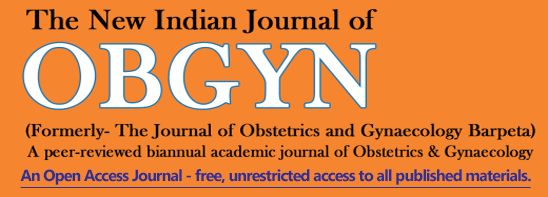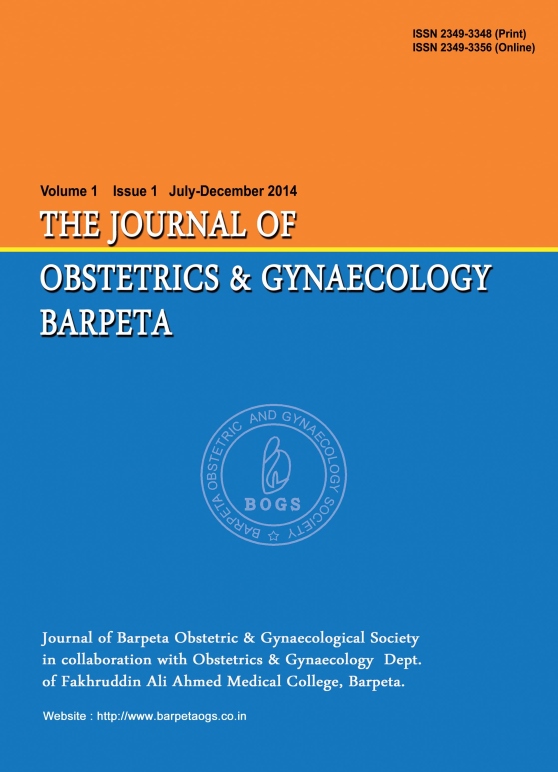
The New Indian Journal of OBGYN. Epub Ahead of Print
A clinical study of maternal and fetal outcome in multiple gestations
Bhakti Vijay Kalyankar, Vijay Y Kalyankar, Shrinivas N Gadappa, Pratima Gaikwad
ABSTRACT
Background: Twin gestation has always fascinated mankind throughout history; and its management is potential challenging for an obstetrician. Increasing maternal age at childbirth, use of ovulation induction drugs and assisted reproductive technologies has increased significantly the incidence of multiple fetal gestations. In India, the estimated incidence of twin pregnancy is 9–16 per 1000 births. With multiple gestation, than singleton ones, pregnancy induced maternal complications occur three to seven times more often. Prematurity, growth restriction, congenital anomalies, twin to twin transfusion, birth asphyxia, birth trauma, still birth are the problems faced by the multiples. The knowledge of maternal complications in multiple gestations will help in better maternal surveillance and prevent and treat the complications to improve the maternal and perinatal outcome. Objectives: To study the incidence of multiple gestation, obstetrical complications, maternal and foetal outcome in multiple pregnancies at a tertiary care centre. Methods: It was a retrospective observational study conducted in the department of Obstetrics and Gynaecology, at Govt medical college and hospital, Aurangabad, tertiary care Hospital, from October 2015 to October 2017. The data retrieved from the medical records on the multiple pregnancies included demographic data, complications of pregnancy, and maternal and neonatal outcomes. Appropriate Statistical analysis was performed. Results: Of 533 multiple gestations, after considering the inclusion and exclusion criteria, 500 cases were found eligible for study giving percentage of 1.4% birth. Median gestational age at delivery was 37 weeks. Most common maternal complication was anaemia (32%). Other maternal complications were preterm labour (19.6%), premature rupture of membranes (8.8%), pregnancy induced hypertension (8%), ante partum haemorrhage (0.4%), and postpartum haemorrhage (7.2%). 50.8% cases were delivered by caesarean section. 44.5% neonates had preterm delivery and prematurity was the most common cause of neonatal death. Neonatal death rate was 11%. Conclusion: Twin pregnancy has high maternal and neonatal complications, especially preterm delivery that increases risk of significant neonatal morbidity and mortality.
Volume 1 Issue 2
Volume 2 Issue 1
Volume 2 Issue 2
Volume 3 Issue 1
Volume 3 Issue 2
Volume 4 Issue 1
Volume 4 Issue 2
Volume 5 Issue 1
Volume 5 Issue 2
Volume 6 Issue 1
Volume 6 Issue 2
Volume 7 Issue 1
Volume 7 Issue 2
Volume 8 Issue 1
Volume 8 Issue 2
Volume 9 Issue 1
Volume 9 Issue 2
Volume 10 Issue 1
Volume 10 Issue 2

